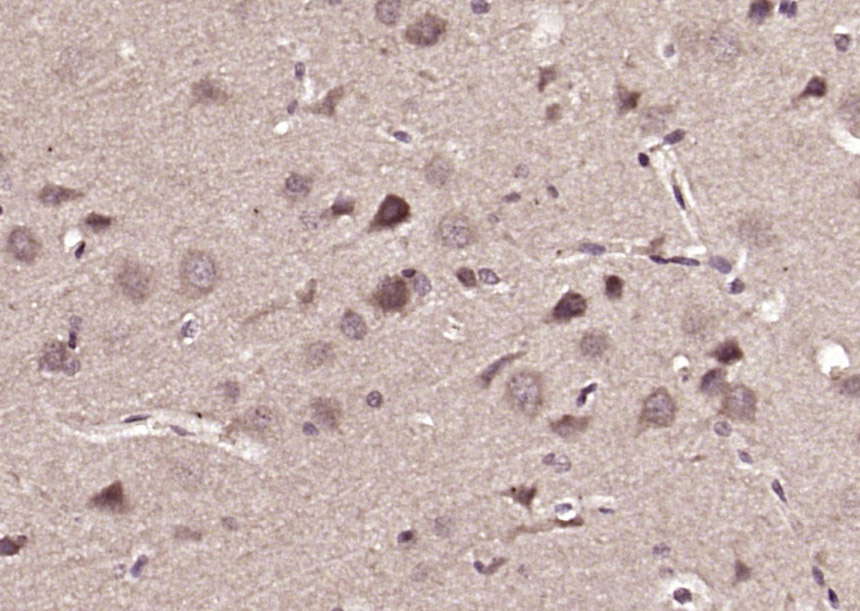
Rabbit Anti-RNF59/MID1 antibody
BBBG 1; BBBG1; Finger on X and Y mouse homolog of antibody; FXY; GBBB 1; GBBB1; MID 1; MID-1; Mid1; Midin; Midline 1 (Opitz/BBB syndrome); Midline 1; Midline 1 ring finger; Midline 1 RING finger protein; Midline-1; Midline1; OGS 1; OGS1; OS antibody; OSX;
View History [Clear]
Details
Product Name RNF59/MID1 Chinese Name Ring finger protein59抗体 Alias BBBG 1; BBBG1; Finger on X and Y mouse homolog of antibody; FXY; GBBB 1; GBBB1; MID 1; MID-1; Mid1; Midin; Midline 1 (Opitz/BBB syndrome); Midline 1; Midline 1 ring finger; Midline 1 RING finger protein; Midline-1; Midline1; OGS 1; OGS1; OS antibody; OSX; Putative transcription factor XPRF; RING finger protein 59; RNF 59; RNF59; TRI18; TRI18_HUMAN; TRIM 18; TRIM18; Tripartite motif containing protein 18; Tripartite motif protein TRIM18; Tripartite motif-containing protein 18; XPRF; Zinc finger X and Y antibody; ZNFXY. Research Area Cell biology immunology Zinc finger protein Immunogen Species Rabbit Clonality Polyclonal React Species Rat, (predicted: Human, Mouse, Chicken, Dog, Pig, Horse, Sheep, ) Applications ELISA=1:5000-10000 IHC-P=1:100-500 IHC-F=1:100-500 IF=1:50-200 (Paraffin sections need antigen repair)
not yet tested in other applications.
optimal dilutions/concentrations should be determined by the end user.Theoretical molecular weight 75kDa Cellular localization cytoplasmic Form Liquid Concentration 1mg/ml immunogen KLH conjugated synthetic peptide derived from human MID1/Midline-1/RNF59: 171-270/667 Lsotype IgG Purification affinity purified by Protein A Buffer Solution 0.01M TBS(pH7.4) with 1% BSA, 0.03% Proclin300 and 50% Glycerol. Storage Shipped at 4℃. Store at -20 °C for one year. Avoid repeated freeze/thaw cycles. Attention This product as supplied is intended for research use only, not for use in human, therapeutic or diagnostic applications. PubMed PubMed Product Detail Midline-1 (Tripartite motif-containing protein 18, Putative transcription factor XPRF, RING finger protein 59) is a 667 amino acid protein encoded by the human gene MID1. Midline-1 belongs to the TRIM/RBCC family and contains two B box-type zinc fingers, one B30.2/SPRY domain, one COS domain, one fibronectin type-III domain and one RING-type zinc finger. Midline-1 is believed to have E3 ubiquitin ligase activity which targets the catalytic subunit of protein phosphatase 2 for degradation. It is a cytoplasmic protein found as a homodimer or heterodimer with Midline-2. It also interacts with IGBP1 (Lymphocyte signaling protein A4). Defects in MID1 are the cause of Opitz syndrome type I (OS-I). OS-I is an X-linked recessive disorder characterized by hypertelorism, genital-urinary defects such as hypospadias in males and splayed labia in females, lip-palate-laryngotracheal clefts, imperforate anus, developmental delay and congenital heart defects. OS-I mutations produce proteins with a decreased affinity for microtubules.
Function:
Has E3 ubiquitin ligase activity towards IGBP1, promoting its monoubiquitination, which results in deprotection of the catalytic subunit of protein phosphatase PP2A, and its subsequent degradation by polyubiquitination.
Subunit:
Homodimer or heterodimer with MID2. Interacts with IGBP1.
Subcellular Location:
Cytoplasm.
Tissue Specificity:
In the fetus, highest expression found in kidney, followed by brain and lung. Expressed at low levels in fetal liver. In the adult, most abundant in heart, placenta and brain.
Post-translational modifications:
Phosphorylated on serine and threonine residues.
DISEASE:
Defects in MID1 are the cause of Opitz GBBB syndrome 1 (OGS1) [MIM:300000]. A congenital midline malformation syndrome characterized by hypertelorism, genital-urinary defects such as hypospadias in males and splayed labia in females, lip-palate-laryngotracheal clefts, imperforate anus, developmental delay and congenital heart defects. Note=MID1 mutations produce proteins with a decreased affinity for microtubules.
Similarity:
Belongs to the TRIM/RBCC family.
Contains 2 B box-type zinc fingers.
Contains 1 B30.2/SPRY domain.
Contains 1 COS domain.
Contains 1 fibronectin type-III domain. [SIMILARITY] Contains 1 RING-type zinc finger.
SWISS:
O15344
Gene ID:
4281
Database links:Entrez Gene: 4281 Human
Entrez Gene: 17318 Mouse
Omim: 300552 Human
SwissProt: O15344 Human
SwissProt: O70583 Mouse
Unigene: 27695 Human
Unigene: 689953 Human
Unigene: 34441 Mouse
Unigene: 444905 Mouse
Unigene: 460870 Mouse
Unigene: 15169 Rat
Product Picture
Bought notes(bought amounts latest0)
No one bought this product
User Comment(Total0User Comment Num)
- No comment



 +86 571 56623320
+86 571 56623320




